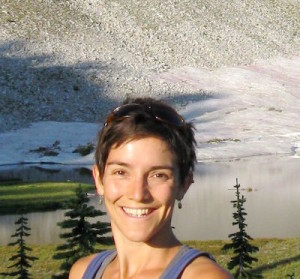By Danya Rumore for EDRblog.org.

Climate change can no longer be avoided. Here in the mountain west, this will mean more frequent and more severe drought and wildfire. Along most of the U.S. coast, the future will almost certainly bring considerably worse flooding due to sea level rise and more intense storms. Communities need to take action to prepare for and respond to these changing climatic conditions – what is referred to as “climate change adaptation”.
The need to adapt to climate change is increasingly recognized by scientists, economists, public officials, and others (including the U.S. military). However, very few communities have taken meaningful action to prepare for the risks they will encounter. This is not surprising since – as Hannah Payne, a Stegner Center Environmental Dispute Resolution Program Summer Fellow, described in her blog “Responding to Climate-Related Risks: Why Collaboration is Key” – climate change adaptation will require collective risk management. It will require that communities work together to manage the risks they collectively face.
To be notified when new EDR blog articles are posted, please sign up for our listserv »
Problematically, as my colleagues at MIT and the Consensus Building Institute (CBI) and I explain in our recently released book Managing Climate Risks in Coastal Communities: Strategies for Engagement, Readiness and Adaptation, very few communities are ready to engage in this kind of collective risk management. Based on our experience working with coastal municipalities to help them prepare for and respond to ongoing climate change effects, we conclude that enhancing the readiness of communities to adapt to climate change requires:
- helping stakeholders access usable knowledge about climate change risks and responses;
- cultivating community literacy about potential impacts and adaptation strategies;
- increasing community optimism about the prospects of their community actually engaging in effective collective risk management; and
- enhancing the collaborative capacity of community members.

This is why we undertook the New England Climate Adaptation Project (NECAP), a two-year participatory action research collaboration involving the MIT Science Impact Collaborative, CBI, the National Estuarine Research Reserve System, and four coastal New England municipalities. The project aimed to increase the readiness of our partner communities to adapt to climate change while simultaneously testing the effectiveness of science-based role-play simulations (a type of face-to-face experiential learning exercise) as a tool for public education and engagement. Through this project and working very closely with these four communities, we learned a number of valuable lessons about the challenges communities (coastal or otherwise) face in seeking to adapt, pathways for catalyzing and supporting local adaptation action, and strategies for enhancing the readiness of communities to collaboratively tackle the issues they must collectively confront.
A key take away from our work and research, as explained in depth in the book, is that enhancing readiness is not just a knowledge-deficit problem; on the contrary, many people in coastal communities are aware of climate change and are broadly concerned about the risks. Therefore, instead of focusing on simply educating individuals, we need to emphasize “bringing climate change home” by helping people really understand local risks, potential community impacts, and strategies to adapt. Equally important, people need to feel a sense of efficacy; they need to believe in their ability to effectively and collectively manage risks if they are going to take action. A critical part of enhancing readiness, therefore, is showing pathways forward and helping people see what their town can do to effectively prepare.
Our research also shows that science-based role-play simulations can valuably bring climate change home for people, show pathways forward, and increase community members’ optimism about a community’s ability to effectively adapt. Additionally, when used to engage a large number of people in a community, they can provide a valuable conversation starter and help get climate adaptation on the policy agenda. In other words, they are a powerful fool for enhancing community readiness to adapt.
It is important to note that enhancing readiness is an important first step, but managing climate change risks will require that communities engage in ongoing monitoring, evaluation, learning, and adjustment. In other words, it will require collaborative and adaptive management – and communities will likely need additional support to assist them in these ongoing efforts.
My colleagues and I hope this book will be a useful resource and guide for those interested in advancing collective risk management and collaborative and adaptive responses to climate-related risks – whether in coastal communities or those farther inland, such as here in Utah.
For more information, please listen to this Re-Quilibrium podcast, in which Dr. Danya Rumore discusses how she and other planners are helping communities prepare for a changing climate.
 Danya Lee Rumore is the Associate Director of the Environmental Dispute Resolution Program in the Wallace Stegner Center and a Visiting Assistant Professor in the Department of City and Metropolitan Planning at the University of Utah. She holds a Ph.D. in Environmental Policy and Planning from the Massachusetts Institute of Technology (MIT).
Danya Lee Rumore is the Associate Director of the Environmental Dispute Resolution Program in the Wallace Stegner Center and a Visiting Assistant Professor in the Department of City and Metropolitan Planning at the University of Utah. She holds a Ph.D. in Environmental Policy and Planning from the Massachusetts Institute of Technology (MIT).
